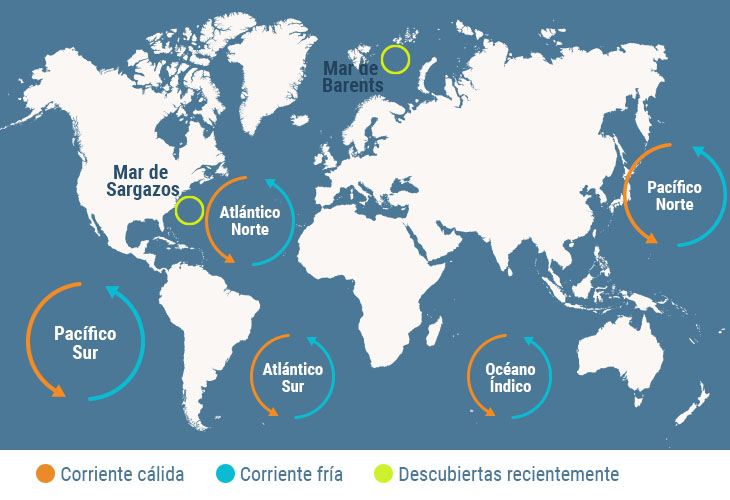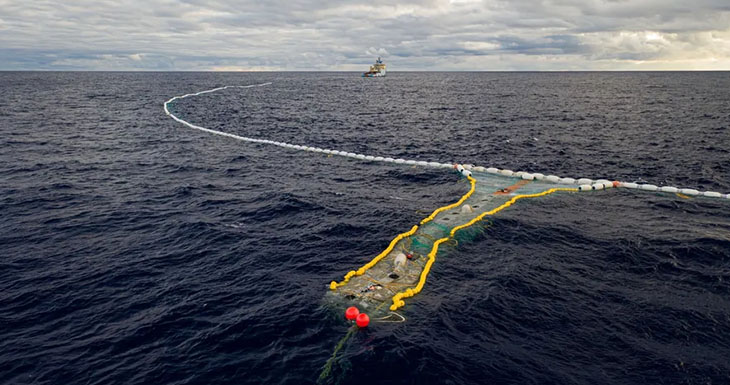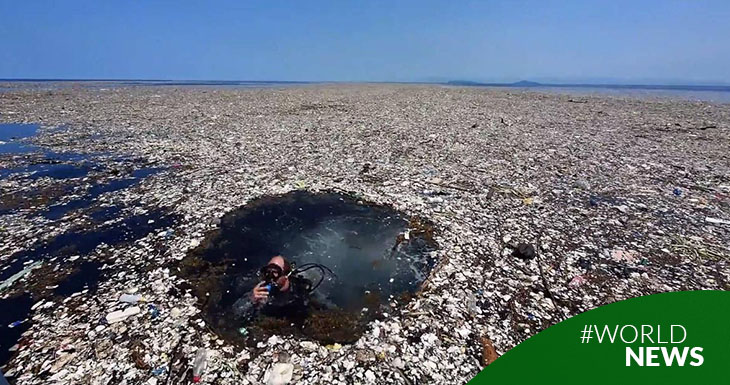The amount of plastic abandoned on the planet would serve to constitute a new continent. It is not a metaphorical expression, since accumulations of plastic waste trapped in marine vortexes and generated by currents gave rise to giant islands scattered in the oceans around the world.
These vast expanses of plastic waste have emerged as a result of decades of marine pollution and represent an imminent threat to the health of our oceans and marine life. They form due to the convergence of ocean currents that concentrate plastic waste in specific areas. These accumulations, located mainly in the Pacific, Atlantic and Indian oceans, have reached alarming dimensions and are seriously affecting marine ecosystems.

What are and where are the 7 plastic super islands on Earth?
1. Plastic island of the Sargasso Sea
It was found in this sea located in the North Atlantic by a Greenpeace expedition. They found all types of easily recognizable waste: shampoo bottles, fishing gear, rigid containers, bags, etc. in an area three times the size of France, according to a study by the Ocean Cleanup entity.
2. Arctic plastic island
Located in the Barents Sea, near the Arctic Circle, it is the smallest plastic island yet, containing 300 billion floating plastic pieces. The remains come from Europe and the east coast of North America, and move along ocean currents as far north as Norway.
3. Plastic island of the Indian Ocean
This island has a variable extension, since it combines areas with less waste density with other more compact areas. And it has an average density of 10,000 waste per square kilometer. Its diameter can exceed 3,000 kilometers.
4. Plastic island of the South Atlantic
It extends over more than a million square kilometers and moves through the South Atlantic Current, located between South America and southern Africa. There is not much information about it and it is estimated that it may contain 860 tons of material.
5. Plastic island of the North Atlantic
It has an area of about 4 million square kilometers and is famous for its high waste density: up to 200,000 per square kilometer. It is driven by the North Atlantic current and has a length of hundreds of kilometers.
6. Plastic island of the South Pacific
It is located off the coasts of Chile and Peru, and is eight times larger than Italy. It has a surface area of about 2.6 million square kilometers and mainly contains microfragments of plastic materials that have been eroded over time and by atmospheric agents.
7. Great Pacific Plastic Island
It is located between California and the Hawaiian archipelago. It moves following the ocean current of the North Pacific subtropical vortex. It is more than 60 years old and is the largest plastic island in the world, and will soon be visible even from space. Its size is immense, although still poorly defined: it is estimated that it can occupy between 700,000 km2 and 10 million square kilometers.
What urgent and necessary actions must be taken?
- Reduction of single-use plastics: It is imperative to take measures to reduce the production and consumption of disposable plastics that are a significant source of pollution.
- Efficient recycling: Improving recycling infrastructure and promoting environmental responsibility in waste management are essential to combat this problem.
- Public awareness: Environmental education and public awareness are crucial to changing behavioral patterns and promoting sustainable practices.
- International cooperation: Given the global nature of this challenge, international collaboration is required to address plastic superislands and develop long-term solutions.
For scientists who study the problem and for the relevant authorities, it is really difficult to trace all marine litter discharges to their origin, since many are accidental or due to little information on the subject and others are illegal dumping.
However, there are several organizations and initiatives that are working to clean up these plastic islands or prevent from forming more. Some of them are:
- Ocean Cleanup: a Dutch foundation that has designed a system of floating barriers that passively capture plastic, taking advantage of the natural forces of the ocean.
- Plastic Bank: a social enterprise that offers economic incentives to coastal communities to collect and recycle plastic, preventing it from reaching the sea.
- Parley for the Oceans: A collaborative network bringing together artists, scientists, activists and businesses to raise awareness and solutions to plastic pollution.
- 4Ocean: An organization that sells bracelets made from recycled plastic and uses the funds to finance clean-up operations at sea and on the coast.

The discovery – from 60 years ago onwards – of these plastic super islands serves as an urgent warning about the need to address the plastic pollution crisis effectively. Our oceans health and the survival of marine life depend on immediate and coordinated actions at a global level.


